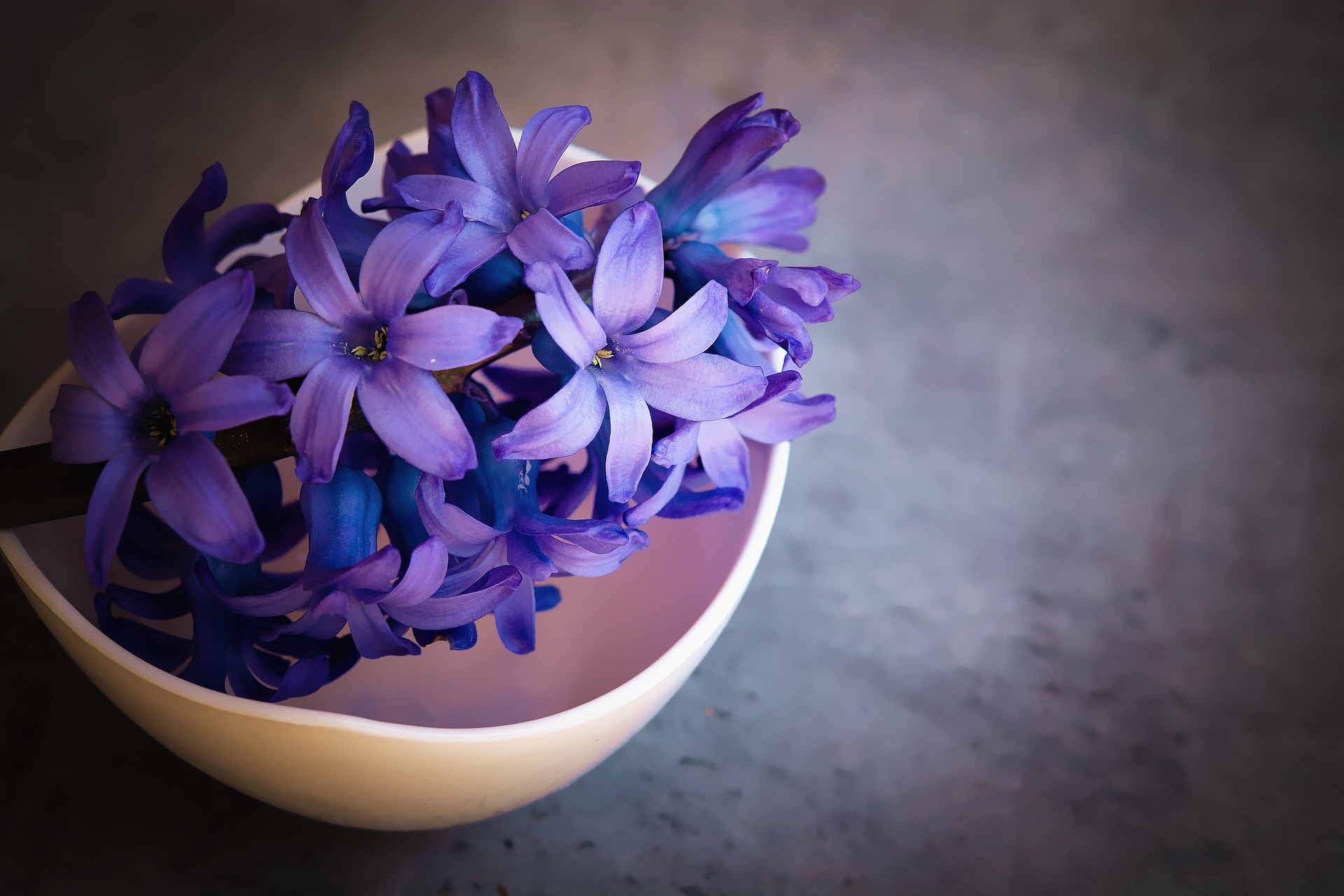
The Pantone Color of the Year for 2018 is Ultra Violet. It’s present in many natural examples, including these hyacinths. Photo: Creative Commons License
The Pantone Company decided to go big or go home with its 2018 “Color of the Year” choice. It’s now headline news when this American company best known for creating a universal color matching system names one color every December it thinks will be the hottest color trend for the year ahead.
Last year’s choice was “Greenery.” Pantone describes it as a “cheery green shade” that evokes the first days of spring when nature and plants revive, restore, and renew. It’s the Good Earth Plant Company color of the year every year, so you know we loved it.
This year’s choice could not be more different. It’s the dramatic purple called “Ultra Violet,” AKA Pantone 18-3838. Pantone’s Executive Director Leatric Eiseman said it communicates originality, inventiveness, and creative inspiration “that takes our awareness and potential to a higher level” from exploring the galaxy to spiritual reflection. Wow, that’s a lot to ask from one color.
You might think we’re a little disappointed with this Color of the Year choice after Greenery. Not at all! There is a lot to love about Ultra Violet and there is more of a connection to nature than you may realize.
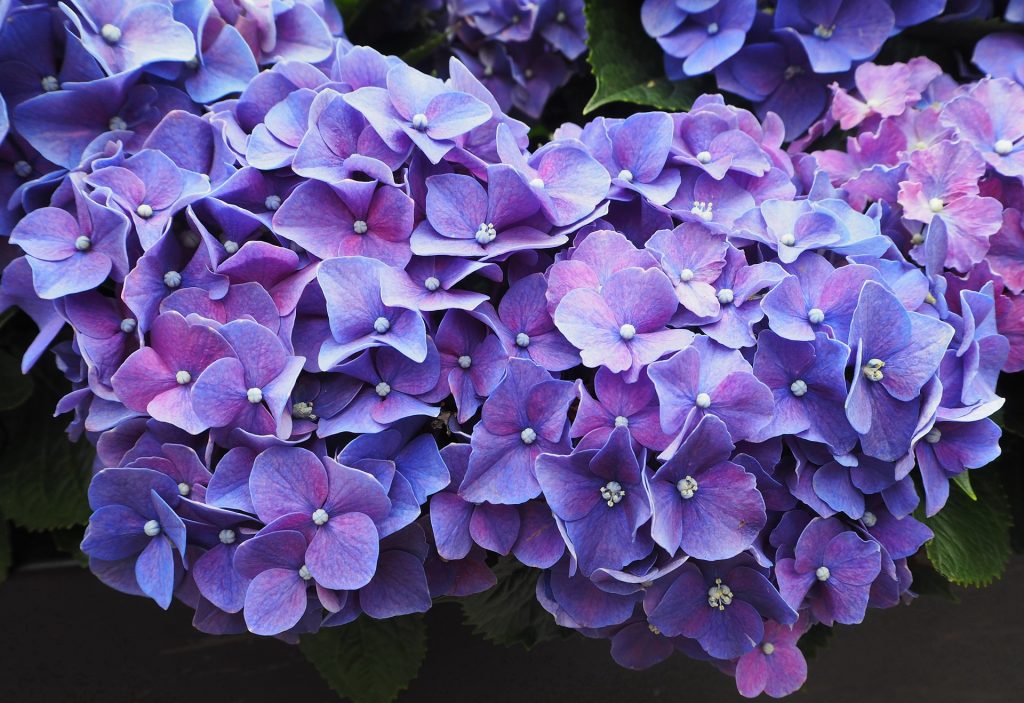
Purple has a traditional association with royalty and richness due to the difficulty reproducing it in dyes. Photo: Creative Commons License
Purple plays a significant role throughout history. It has been associated with royalty and wealth for centuries because it was such a difficult and expensive dye color to produce. The only source was a small sea snail harvested from the Mediterranean Sea off Phoenicia, now modern-day Lebanon. Cleopatra loved purple and colored her clothing, sofas and sails with it. Julius Caesar came back to Rome from Egypt with a purple toga, which he decreed only he could wear. Do you think he realized all that purple was pretty much snail spit?
Queen Elizabeth I’s laws forbid anyone but members of the royal family to wear purple. This stayed true until 1856, when an 18-year-old English chemist named William Henry Park accidentally created a synthetic purple dye when attempting to recreate quinine, an anti-malarial drug. He patented the purple dye, and made himself extremely rich.
People still love purple, and it remains a regal, spiritual, and somewhat mysterious color. Can you imagine Prince without his Purple Rain?
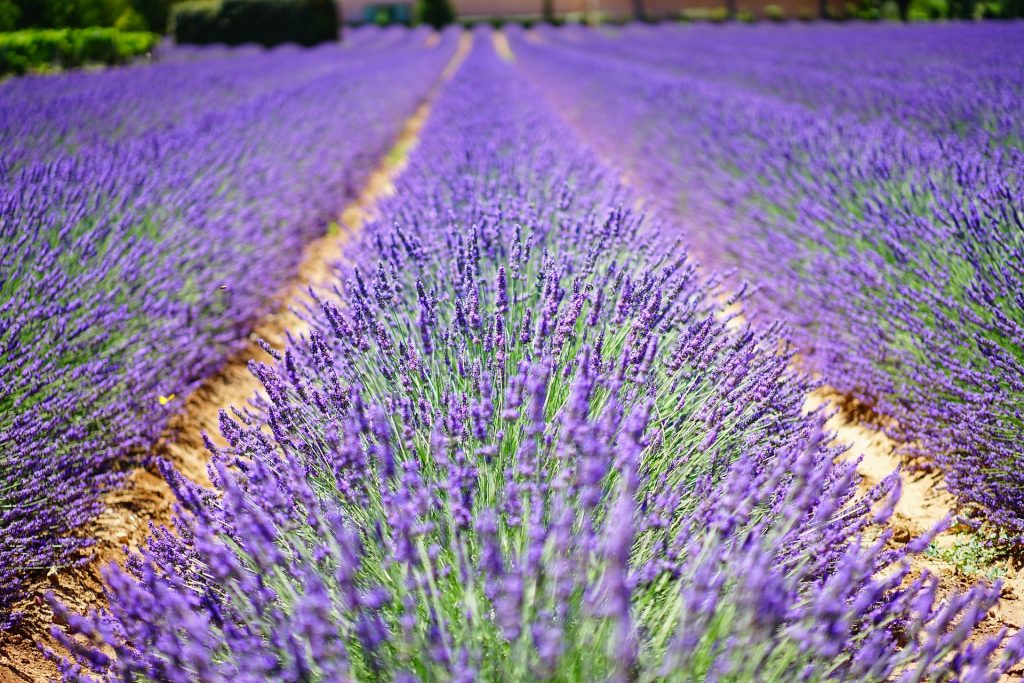
Ultra Violet is surprisingly easy to find in nature, including many lavender varieties. Photo: Creative Commons License
Technically, violet is the name for the wavelength color and it can’t be reproduced. Purple is the color actually produced on earth in nature and by human beings. But we won’t nitpick about the difference. There is plenty of violet and purple color tones in nature. Grapes, eggplant, artichoke and alfalfa flowers, orchids, pansies, asters, irises, sage, lilacs and lavender all produce purple naturally due to pigments called anthrocyanins. There are some plants labeled as “black” in color, but they are actually a deep purple color, such as Aeonium Schwarzkopf (blackhead).
Anthrocyanins help photosynthesis by blocking harmful wavelengths of light that would damage a plant’s leaves. Think of it as natural sunscreen for plants! When plants produce violet and purple flowers, it helps attract pollinators like bees, butterflies, and other insects due to the contract in colors.
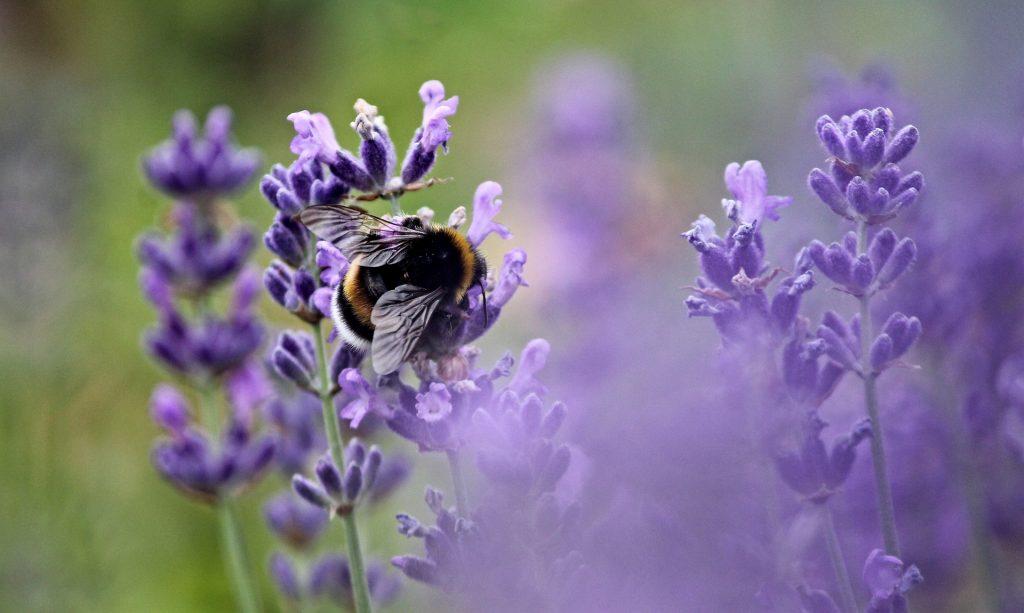
Pollinators like bees love violet and purple colored flowers. You can help support the pollinator population by planting some. Photo: Manfred Richter/Creative Commons License
Pantone may not realize its 2018 Color of the Year choice calls welcome attention to a serious environmental problem. Pollinator populations are rapidly declining all over the world. The disappearance of bees and other pollinating insects threatens agriculture and our food supply. Every apple you’ve ever eaten wouldn’t have existed without pollination by a friendly insect. Three-quarters of all food plants require pollination and human beings can’t do this without help. No pollinators, no pollination and no plants to eat.
The good news: we can help create pollinator friendly habitats by planting the right flowers and plants in our gardens. Why not create an Ultra Violet color palette in your yard? Many of the choices grow well in San Diego’s Mediterranean style climate, like lavender, salvias, and Mexican sage. Try growing some eggplants. Add a hanging planter at your door. You’ll be on trend and helping the environment.
For many years we’ve had a beehive on the green roof at Good Earth Plant Company. Right now, we’re in need of a new beehive and happy to offer up the space to any urban apiarist. Get in touch with me at jim@goodearthplants.com.
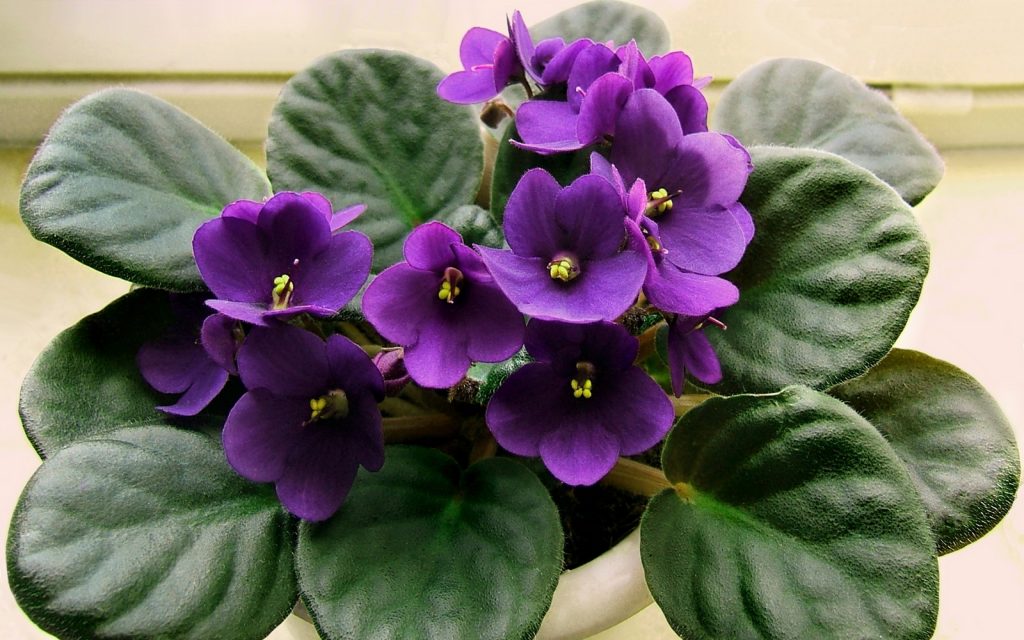
Say hello to the 2018 Pantone Color of the Year on your desk every day with an African violet. Photo: Creative Commons License
Indoors, what could be an easier choice than adding an African violet to your workspace? They fit nearly anywhere and they are pretty forgiving as long as you keep the soil lightly moist every day without getting the leaves wet, and keep them in temperatures above 65 degrees, the same you would be comfortable in.
Contrast is also an important design element when we’re working on projects at Good Earth Plant Company. While a landscape full of green shades alone can be attractive, contrast immediately catches your attention. It’s a way to highlight certain elements in your design – and draw attention away from less-desirable features that can be difficult to remove or hide.
More good news about Ultra Violet: moss walls. For the past year, by far our hottest projects and the hottest design trend is our moss walls. They are versatile and open up all kinds of creative possibilities for our clients, bringing nature into workplaces and other structures where a traditional living wall wouldn’t flourish. One of the many reasons moss walls are all the rage and so popular among our installations is the ability to create designs in any color. So far, most of our clients have gone for mainly green walls with touches of contrasting color. The company Verti-Grow in London has created a few examples of how an Ultra Violet purple can be used with stunning results.
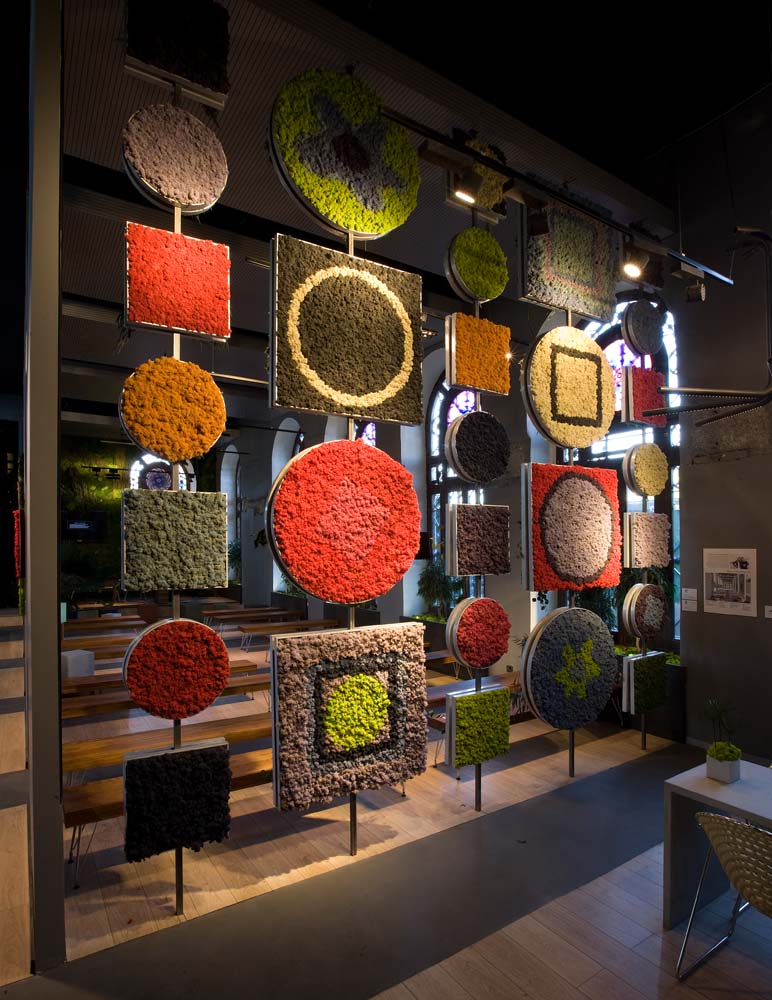
This display at the Madrid design firm “Casa Decor” shows off the color versatility of moss wall forms.
Why not go for a little burst of Ultra Violet in your new moss wall? Color studies show purples and violets used in the workplace can increase sensitivity and nurturing tendencies. Hmmm, not a bad idea considering the trouble with workplace sexual harassment issues hitting the headlines.
These colors encourage imagination and make people more creative. If you want your employees to be more original this year, think about adding purple. Purple also sends a message to clients of richness, comfort, and independence. It’s the perfect choice for art studios or hair and nail salons.
Good Earth Plant Company stays ahead of color trends to provide our clients up to date interiorscaping design ideas. Color choices instantly communicate a lot about your business and your home. We can all tell when someone hasn’t updated their surroundings since the 1970s. Doesn’t it make you wonder whether their thinking process is just as out of date?
Pantone, we like this big bold choice and let’s hope 2018 is just as big and bold as Ultra Violet! Good Earth Plant Company shares your enthusiasm and looks forward to using Ultra Violet as inspiration for our clients this year. So who’s going to be the first to include Ultra Violet in a new moss wall?

